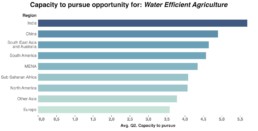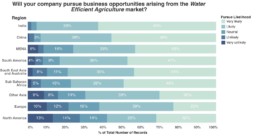Agriculture is by far the greatest consumer of fresh water, but it does not have to be wasteful. Traditional approaches and modern technology can be combined to create agriculture that withdraws less water and produces more crops.
Making use of traditional water management techniques along with modern irrigation technology can dramatically reduce the amount of fresh water used in agriculture. This would also ease the pressure on freshwater sources, leaving more for domestic and industrial uses while increasing crop yields at the same time.

Although 80 percent of agriculture (making up about 58 percent of the global food basket) is already rain fed, available rainwater can be harvested, stored, and used much more efficiently. It is estimated that improved rainwater management techniques can multiply crop yields by a factor of 2 to 4 in parts of Africa and Asia. More efficient rainwater use can often be achieved by introducing or readopting traditional methods of water retention and rain harvesting that require low capital expenditure.
In areas where irrigation is needed, efficient technologies such as drip irrigation can reduce water consumption by 30 to 70 percent and improve yields by 30 to 200 percent for various crops. Soil monitoring and irrigation scheduling are also helpful techniques in this arena. In addition, more efficient water management in agriculture, including improved watershed management, can considerably reduce soil degradation by minimizing runoff that washes out nutrients.
Collaborating with famers and spreading awareness about water management is vital, and governments can also provide the conditions necessary for improving efficiency in water usage by effectively coordinating the sectors competing for the resource.
Survey Findings
Water-Efficient Agriculture is a very popular market opportunity, when assessed for potential beneficial impact on societies. The market has been assessed optimistically across all regions, but especially in the MENA region, this market has been very positively received.

Although it generally throughout our survey has been ranked very positively, then it is noteworthy that it is a lot less preferred by the age group under 30. It is also seen as a lesser attractive market opportunity from a business standpoint, especially regarding its potential to inspire new business ventures.

Stakeholders from civil society and business are perceived as its strongest supporters, and this picture is true across almost all regions.
This market was surveyed globally in 2014 by more than 5500 leaders from both the public and private sectors. The survey was conducted in collaboration with the research company YouGov. The survey results were originally published in the Global Opportunity Report 2015.

